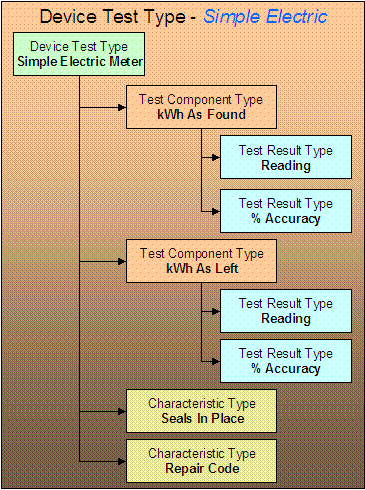A Device Test Records Test Results
You create a device test each time you test a meter or item. The device test keeps track of when the test was conducted, who conducted it, and the results of the test. Every device test references a device test type.
When you design your device test types, you are actually defining the type of information that can / must be recorded when such a device test is saved in the system. The following picture illustrates a device test type used for tests of simple electric meters.

Notice that the above device test type example uses two different mechanisms to record test results:
- Component tests. If your organization maintains the test results from individual registers, you will use component tests. In the above example, two different types of component tests can be recorded for this type of device test: one is used to record a register's accuracy before calibration (the "as found" component test), another is used to record the register's accuracy after calibration (the "as left" component test).
- The component test type controls the type of information that is recorded for a component test. In the above example, each component test type requires the same result types - a register reading and a percent accuracy. Note, the fact that these two test types require the same results is coincidental.
You have to set up a component test types and test result types to satisfy your organization record keeping requirements.
- Characteristics. If your organization doesn't keep register-specific test results, you don't have to use component tests. Rather, you can simply use characteristics to record test results. In the above device test type, characteristics are used to record whether the seals were in placed and a repair code (if the test results in a repair). Refer to Setting Up Characteristic Types & Their Values for more information about characteristics.
